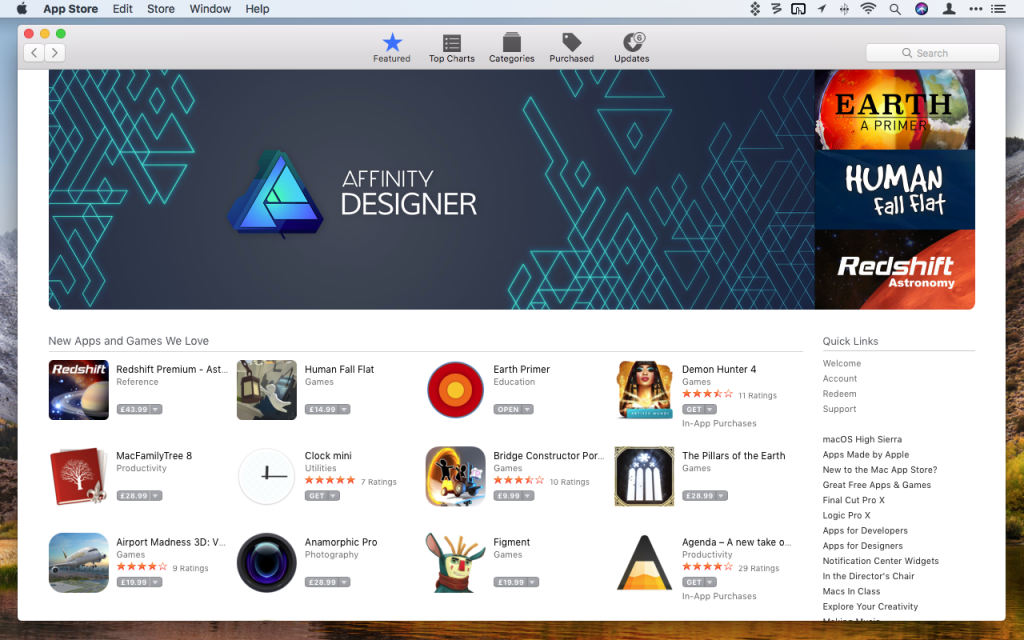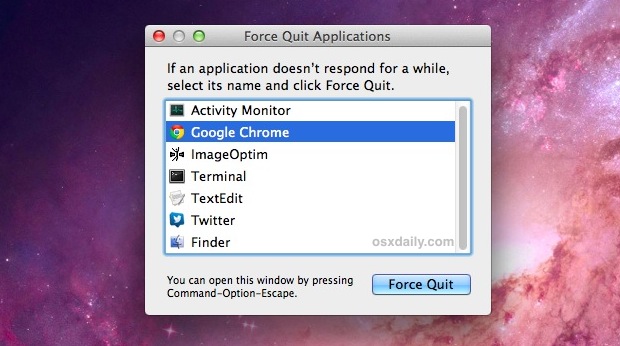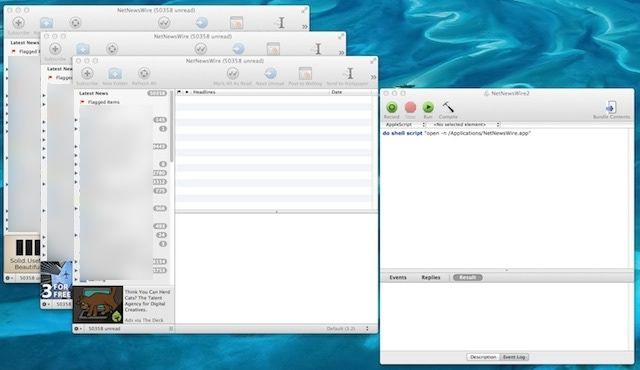Disclaimer: I am not on the .NET Core Team. I used the tools available publicly and have no insights into the future of .NET Core. It looks very bright though. :)
The working source code for this project can be found here.
Intro
Day 10 - Using JetBrains Rider with a.NET Core Console Application; In this post, we’re going to look at running the app from the command line and then the Mac. Running the App in the Windows Command Prompt. While you can obviously run the app inside of Visual Studio with the F5 command. How to run Android apps on Mac. Android is the most popular operating system in the world right now, and you can try it out for free on your Mac. We show you how. Using Nox to run Android apps. In the Terminal app on your Mac, enter the complete pathname of the tool’s executable file, followed by any needed arguments, then press Return. If a command is located in one of the shell’s known folders, you can omit path information when entering the command name. The first application for running Windows-based applications on your Mac that we will talk about is Boot Camp. This tool will allow you to install a fresh copy of Windows OS alongside your Mac OS X, giving you a dual-boot option (you can select which operating system to use).
A complete list of post in this series is included below :
In this post, we’re going to look at running the app from the command line and then the Mac.
Running the App in the Windows Command Prompt
While you can obviously run the app inside of Visual Studio with the F5 command. You should also know that you can run the app inside of the console. Before we begin, make sure you have the app found here. After opening the app or downloading it, open the folder containing the project in the command prompt.
You can run your application here by simply typing :
You will the following output :
The exact same result from running the console app in Visual Studio.
Using dotnet publish to get the app ready for Mac
Go ahead and type dotnet publish on the command prompt and then type tree to look at your directory listing as shown below :
You should see the publish directory. Navigate into it and list out the files in the directory :

Take note that the dlls listed below are related to the package reference that we added in the last blog post.
- Newtonsoft.Json.dll
- System.Runtime.Serialization.Primitives.dll
This only leaves the NetCoreConsoleApp.dll which is the Console application that we can run on a Mac (or any other platform that supports .NET Core).
Running the app on a Mac
Finally! It is about time you might say. I agree. Before you can run the app on your Mac, you’re going to need to head back over to the .NET Core downloads page and install OpenSSL and then the SDK (or runtime) if you remember the difference from the first post.
To run this on your Mac, you’ll need to copy the ‘publish’ folder to your Mac. Then open Terminal and you can run the app by just typing :
This is awesome! Now you have an app that run on another platform and you used your existing .NET skillset to create it. I’m LOVING .NET Core!

Wrap-up
OK, I’m going to take a break and I’ll be back next week. As always, thanks for reading and smash one of those share buttons to give this post some love if you found it helpful. Also, feel free to leave a comment below or follow me on twitter for daily links and tips.
Everyone who uses computers daily develops a set pattern. They switch on their PCs, start their respective programs, and wait while they open up. What if you don’t have to start these apps manually, and they automatically launch when you login? Sounds great, right!! So let me tell you how to set applications to launch automatically on Mac startup.
How to Set Applications to Launch Automatically on Mac Startup
The best part about automatically launching your most used applications is the time and effort saved in the process. Moreover, it is super simple to enable or disable. Along with some methods to automize your apps, I have also included some tips on managing them properly.
So make sure that you scroll all the way down. And while you are there, don’t forget to send us some love in the comment section below.
Quick Access:
How to Launch Applications on Mac Startup From the Dock
Step #1. Launch the app you want to launch automatically on Mac Startup. (Skip the step if the app is already in your Dock)
Step #2. Use secondary click (two-finger tap) or right-click to access the app’s options.
Step #3. Select Options from the listing and click on Open at Login.
That’s it!! From now onwards, the applications will launch automatically on Mac startup. While quite a simple process, it can be difficult to add multiple apps individually. Don’t worry our next solution will resolve the issue in a jiffy.
How to Add Apps to Open at Mac Startup
Step #1. Click on Apple () icon and select System Preferences from the menu.
https://knowledgelucky.netlify.app/how-to-code-an-app-for-mac.html. Each app provides you with a way to learn the coding skills you need through play and interaction. The app teaches you concepts through short interactive texts, with fun follow-up quizzes.
Step #2. Select Users & Groups.
Step #3. Here, switch to the Login Items tab from the top bar.
Step #4. Click Plus(+) from the bottom of the page.
Delete duplicate files mac app apple support software. Step #5. Select the app or press Command(⌘) key to select multiple apps from the window and click on Add.
You can also add a document, folder, server, or other items to the startup list. Just go to their location, select them, and click on Add.
Using Third-Party Apps to Open Applications at Mac Startup
Is there an app for this as well?? Of course, nowadays, there’s an app for anything. My suggestion is to use CleanMyMac X, an easy to use, efficient, and useful app.
The benefit of downloading such all-inclusive Mac cleaner apps is the whole array of intriguing features they offer. Whether it is deleting duplicate files or safe uninstaller, these apps enable you to optimize your usage as much as possible.
How to Manage Apps at Startup on Mac
While it is fun to have all your apps opened for you, this may significantly delay your log-in process. In short, use this feature wisely and moderately, or this will be more of a hindrance. Here are a few features that will make managing apps at startup simpler.
Hide Login Items at System Startup on Mac

If you want an item to launch at startup, but not to pop-up on the screen. The app/folder/document hides and runs in the background, ready for whenever you need it.
For instance, apps like Photoshop or CorelDRAW can be prepped in the background while you check your mails or do some errands.
Step #1. Click on Apple () icon → System Preferences → Users & Groups → Login Items.
Step #2. Add the app in the listing and tick the Hide box next to it.
Note: This feature is not applicable for servers, they will always appear in the Finder after login.
Temporarily Disable Startup Apps on Mac
There might be days when you don’t have time to enable your computer’s normal boot process. Thankfully you can temporarily stop them from launching when you log in.
Start your laptop as per usual. Type in your log-in password, press and hold the Shift key before hitting enter. Release the shift key once you see the Dock. The startup apps will not load this time, though they will behave normally otherwise.
Delay Startup Apps on Mac Startup
Run Pc Software On Mac
A very simple and basic app dubbed as Delay Start lends you an exciting way to manage startup apps. Instead of temporarily stopping auto-launch apps, it starts to fasten the log-in process.
Just stop all apps from launching automatically and add just Delay Start in the list. Now open Delay Start and add the apps you want to launch automatically. Set the launch timing from the Time Setting section and close the app.
Next time when you log-in, the Delay Start app will run automatically. And after the set time limit, all the apps added to it will start simultaneously. Though, the developer calls it an over-engineered app, in my opinion it surely makes the login process faster.
I love automation. Do you?
For quite some time, I have been using this feature to ease off my morning rituals. I start my Mac and leave the room for my tea. By the time I am back at my seat, my Slack, Safari, and Mail apps are alive and waiting for my attention. This gives me some precious time to relax and center myself for the day ahead.
Run Ios App In Mac
If you pride yourself as a multitasker such as I, here are my favorite tips and tricks:
Run Android App In Mac
Suraj is a digital marketing expert on the iGB's team. He contributes to the social media section along with tips and tricks for iPhone, Apple Watch. Apart from blogging, he likes to work out as much as he can in his gym and love to listening to retro music.
Run Windows App In Mac
- https://www.igeeksblog.com/author/padmasuraj/How to Save Your Kids from their Digital Exposure ?
- https://www.igeeksblog.com/author/padmasuraj/How to Add Filter to Video on iPhone and iPad in iOS 13
- https://www.igeeksblog.com/author/padmasuraj/How to Manage Downloads in Safari on iPhone and iPad in iOS 13
- https://www.igeeksblog.com/author/padmasuraj/How to Use External Hard Drives with iPad and iPhone in iOS 13